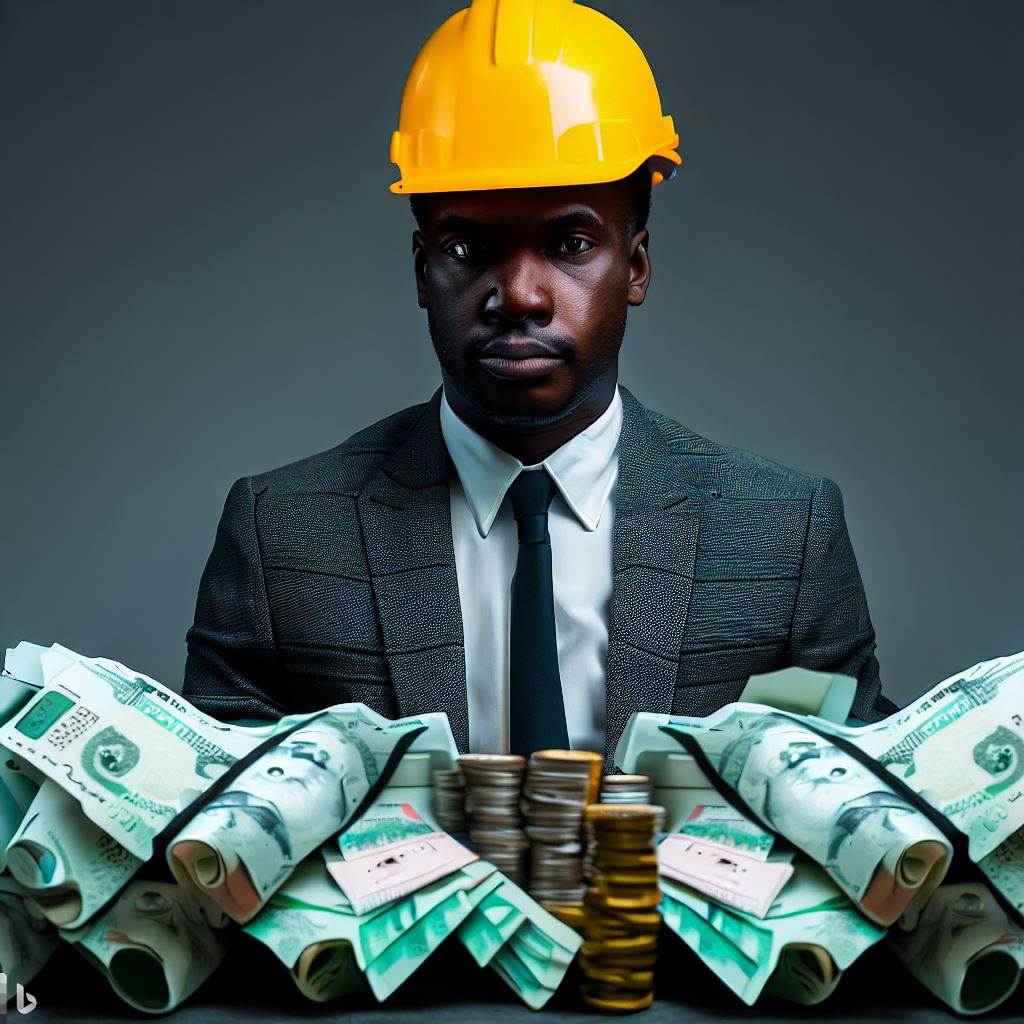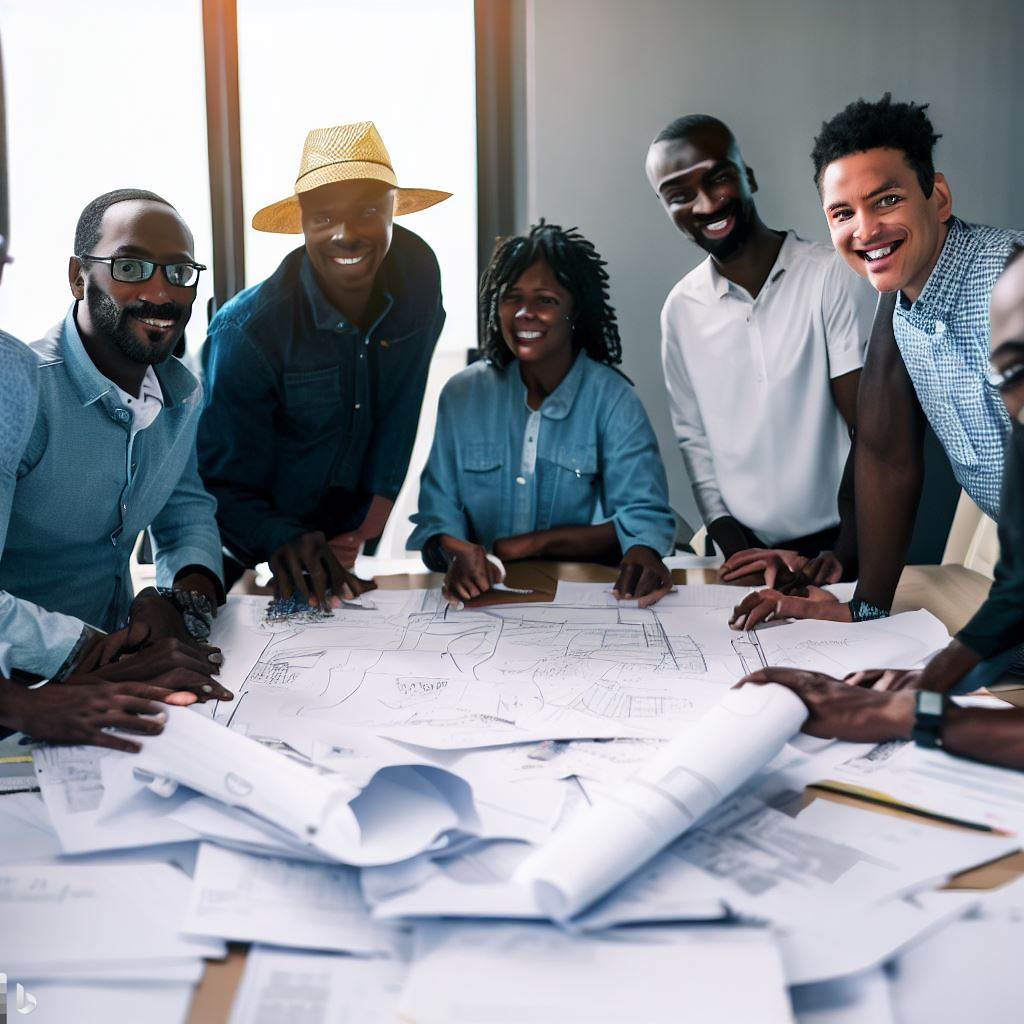Introduction
Architectural design is greatly influenced by political and social factors in any given society. In Nigeria, where politics has played a significant role in shaping the country’s history, architecture has not been left out in the mix.
Nigeria’s political history can be traced back to pre-colonial times when it was a collection of independent kingdoms.
The arrival of the British in the 19th century resulted in the country’s colonization and years of political instability followed, culminating in a civil war from 1967 to 1970.
Today, Nigeria is a democratic country, but politics remains one of the most influential factors in determining architectural designs.
The Nigerian government’s need to showcase the country’s progress and modernity often influences the design of public buildings.
For example, in the capital city, Abuja, the Nigerian National Mosque and the National Christian Centre are designed in a modern architectural style, featuring towering structures and intricate designs.
Politics also plays a role in the design of private buildings. Wealthy individuals often commission buildings that reflect their political affiliations or aspirations.
The use of certain architectural styles or materials may be used to project a certain image to the public. For instance, a building with a colonial-style façade may be seen as a nod to Nigeria’s colonial past and a symbol of status and wealth.
In essence, Nigeria’s politics has greatly influenced the nation’s architectural designs.
Whether it is public or private buildings, the need to reflect political affiliations, aspirations, and progress has driven the development of certain architectural styles and materials.
Understanding the impact of political and social factors on architectural design is an important aspect of any society’s history and development.
Read: Balancing Modern Design and Tradition in Nigerian Architecture
Influence of Colonialism on Nigerian Architecture
Nigeria, located in West Africa, was colonized by Great Britain from the late 19th century until 1960 when it gained its independence. During this time, British influence greatly impacted Nigeria’s architectural designs.
Examples of colonial architecture in Nigeria include the National Museum Lagos, built in 1957, and the University of Ibadan, which was established in 1948. These buildings display a combination of Western and traditional Nigerian elements.
Colonialism also influenced the design of public buildings such as government offices and schools. These structures were modeled after British architecture with features such as high ceilings, large windows, and intricate facades.
The influence of colonialism is evident in many of Nigeria’s architectural designs, with elements of traditional Nigerian styles mixed with Western design principles.
Read: Sustainable Architecture: New Trends in Nigeria
Political Ideologies and Architectural Styles
How Politics Influence Architectural Designs, Politics and architecture have always been intertwined in Nigerian society due to the significant role that the government plays in the design and construction of buildings.
The political ideologies of Nigeria’s major political parties have influenced the architectural styles and motifs used in various government buildings.
In this section, we will explore how these ideologies have influenced architecture in Nigeria.
Overview of Nigeria’s major political parties and their ideologies
Nigeria’s major political parties include the All Progressives Congress (APC) and the People’s Democratic Party (PDP), among others.
The APC is considered a center-right party that promotes the ideology of capitalism and free-market enterprise.
On the other hand, the PDP is a center-left party that promotes social democracy and has a history of embracing pan-Africanism.
Read: Dissecting The Architect Registration Council of Nigeria
Examples of how these ideologies have influenced architecture.
During the era of African socialism in Nigeria, the government heavily promoted the use of traditional Nigerian motifs in the design of government buildings.
This was to connect with Nigerian heritage and promote a sense of national identity. For instance, the National Assembly, which is the legislative arm of the Nigerian government, has a wall sculpture that depicts Nigeria’s coat of arms and traditional tribal motifs.
Similarly, the Central Bank of Nigeria also features traditional motifs in its design.
Under military rule, the focus shifted from promoting national identity to showcasing the government’s power and authority.
Consequently, large, imposing, and monumental government buildings were constructed, such as the Federal Secretariat Complex in Abuja.
This building features two towers, each rising above 200 feet and connected with a bridge. This design did not necessarily promote any particular political ideology but instead served as a symbol of military strength and authority.
The Impact of the military dictatorship on architectural design in Nigeria
The military dictatorship in Nigeria had a significant impact on architectural design in the country.
The government owned and controlled many aspects of the economy, including construction. This meant that the government was able to influence the design of public and private buildings.
During the military dictatorship, the government placed a strong emphasis on building large, imposing structures that would command respect and showcase the power and authority of the state.
The result was often monolithic buildings that featured high walls, reinforced concrete structures, and limited decoration.
Public buildings, such as hospitals and schools, were poorly designed and constructed and lacked the necessary infrastructure to function effectively.
As Nigeria transitioned to democracy, the focus shifted from state power to national identity and development. The government now promotes the use of technology and sustainable design to improve the built environment.
Architects are encouraged to incorporate local materials and traditional motifs into their designs to connect with the Nigerian heritage.
An example is the recently completed World Trade Centre in Abuja, which boasts a sustainable design and incorporates traditional Nigerian motifs in its façade.
Summarily, the political ideologies of Nigeria’s major political parties have greatly influenced the design and construction of buildings in the country.
While political ideology is not the only factor that shapes architectural styles, it plays a significant role.
As Nigeria moves towards a more democratic and sustainable future, architects must pay attention to the political climate and work towards building structures that promote national identity and sustainable development.
Read: Role of Women in Nigeria’s Thriving Architecture Scene
Ethnicity and Regionalism in Architecture
Nigeria is a country with over 250 ethnic groups, each with its unique culture, traditions, and architecture. These diverse ethnic and regional groups have historically influenced architectural design in their respective regions.
The Hausa people in the north use earthen materials, such as clay and straw, for construction. Yoruba people in the southwest embrace timber, stone, and mud in their architectural heritage.
The Igbo people in the southeast primarily use mud and thatch for construction. The Fulani people’s nomadic architecture is designed to be easily dismantled and moved.
Regionalism reflects cultural and historical influences within Nigeria. The Sokoto Caliphate influenced the north-western region with distinctive Islamic architectural styles.
The coastal region influenced by Portuguese and British colonialism has a European architectural style. The Nsukka School of architecture emerged in the 1960s, focused on organic architecture and local materials.
Ethnicity and regionalism significantly impact architectural design, reflecting unique cultural and historical influences.

You Might Also Like: Appreciating Nigeria’s Architectural Heritage and Conservation
Contemporary Nigerian Architecture and Politics
- Recent trends in Nigerian architecture include the use of sustainable materials and technology.
- Architects in Nigeria are embracing sustainable materials such as bamboo and timber in their designs.
- They are also incorporating technology to create smart buildings that are energy-efficient and environmentally friendly.
- However, political factors such as corruption and government mismanagement have affected contemporary architectural development in Nigeria.
- Corruption has been a major issue in the construction industry, leading to substandard buildings and unsafe infrastructure.
- The government mismanagement has also hindered architectural development by neglecting public buildings and infrastructure.
- Despite the challenges, recent political and economic reforms are expected to have a positive impact on the future of Nigerian architecture.
- The government is introducing policies to encourage the use of sustainable materials and technology in construction projects.
- Also, there are efforts to attract foreign investors to the construction industry, which will result in the development of modern and innovative buildings.
- Additionally, the privatization of the power sector will provide a stable source of electricity to power the smart buildings being constructed in Nigeria.
In essence, the influence of politics on architectural designs in Nigeria cannot be ignored.
Political factors such as corruption and government mismanagement have had adverse effects on architectural development in the past.
However, recent political and economic reforms provide an opportunity for the Nigerian architecture industry to thrive.
By embracing sustainable materials and technology, the architects in Nigeria can develop modern and innovative buildings that meet the needs of their clients while also preserving the environment.
Read: Impact of Nigerian Architecture on Africa’s Skyline
Conclusion
Each era from colonialism to democracy has left a mark on Nigeria’s built environment.
How politics influence architectural designs, evident in styles and structures such as British-dominated buildings.
However, as Nigeria moved towards independence, there was a shift towards incorporating local elements into architectural designs.
This can be seen in structures like the National Theatre in Lagos, which features an iconic Yoruba mask-inspired design.
The military rule of the 1980s and 90s significantly impacted Nigerian architecture, constructing imposing government buildings and monuments.
Ancient Nok Terracotta sculptures and Benin Bronze plaques testify Nigeria’s diversity and ingenuity.
Recognizing the cultural and historical significance of Nigerian architecture is crucial for its development.
Finally, Nigeria’s politics have had a significant impact on its architecture, shaping the country’s built environment in various ways.
However, despite these influences, Nigerian architecture remains a testament to the country’s rich history and cultural heritage.
Continuing support and appreciation for architectural development in Nigeria is crucial to shaping the country’s identity.




